“For the show, we mixed all the hypocrisies we see to create grandeur personalties with blood on their hands.”
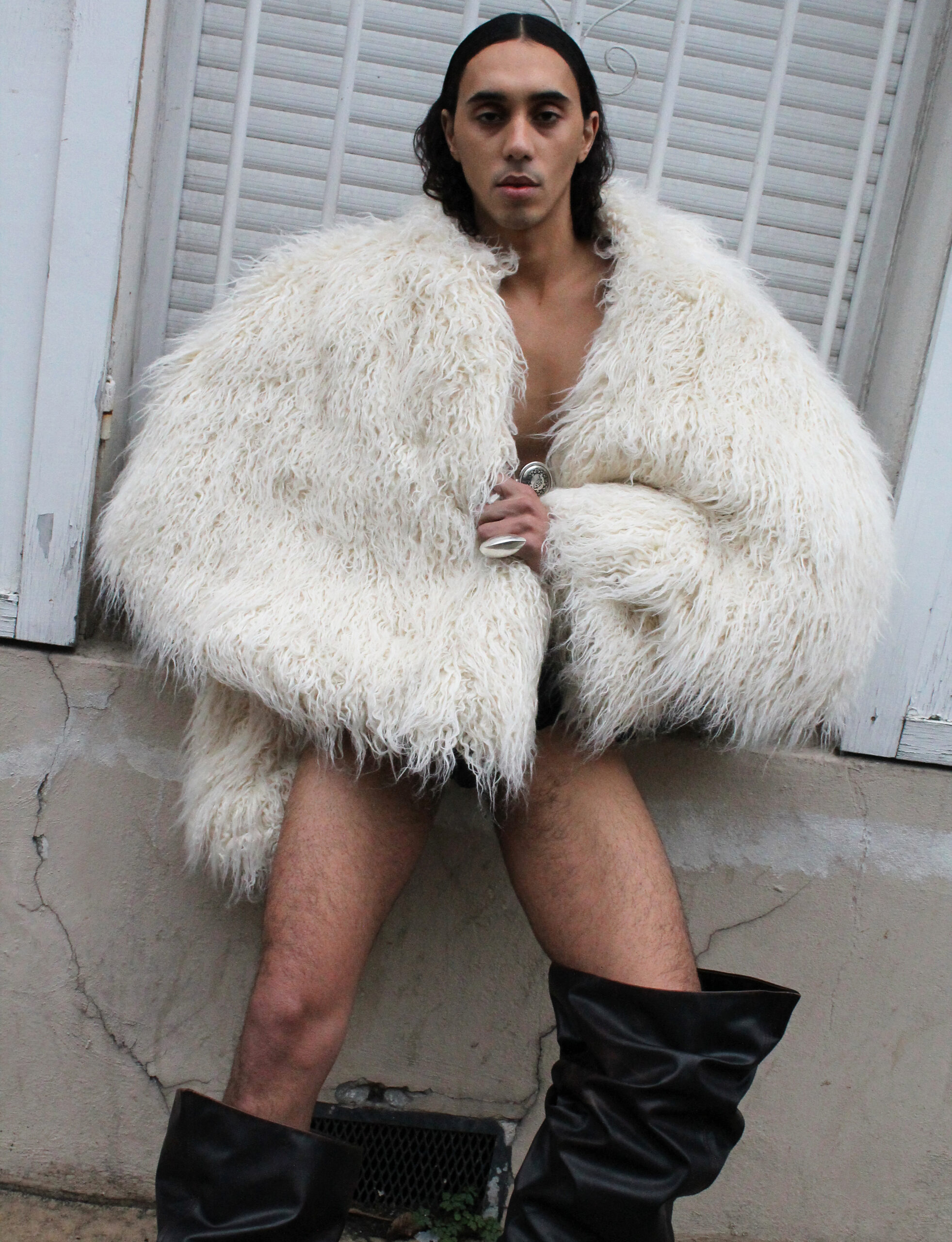
Full look TRASHY CLOTHING, shoes UNTITLAB
TRASHY CLOTHING is a Palestinian-born, Jordan-based brand that erects a subversive world of unapologetic defiance. Co-founders Shukri Lawrence and Omar Braika wield controversy as a blade, daringly confronting the Israeli occupation and Western imperialism that upholds the status quo — an energy of fierce resistance the fashion industry has been missing. Their weapon of choice? Irony. Embedded in camp and tongue-in-cheek aesthetics, the indulgent layer of kitsch conceals an incisive critique of the dystopian political reality in which we all exist.
In a world where genocide is livestreamed 24/7, dismantling the media’s twisted, oppressor-favouring narratives has never been more urgent. Their latest AW24/SS25 collection, Arsenal of Democracy, is a testament to this, as it condemns the complicity of world leaders, letting the American flag burn to ashes on their garments. Their practice entwines Middle Eastern artisanal crafts and hand embroideries with contemporary cultural symbols, acknowledging that today’s events are inextricable from the long shadow of global socio-political histories.
With a fan base that includes Mahmood, Julia Fox, and Mia Khalifa, Trashy Clothing have been on our radar for quite some time. As dusk settles over Amman, Lawrence joins me via FaceTime to discuss storytelling in design, Arab Queer culture, and the politicisation of fashion. Embodying the spirit of a Trojan horse, Trashy Clothing invites us to continuously question what we see — and to always read between the lines.
So lovely to speak with you! How are you doing today?
A bit on and off. The news is always not very great to look at. It’s been a year of this, so it’s been tough.
It definitely feels weird to just go on with daily life… Where are you calling from?
I’m currently in Amman, Jordan, where our studio is based.
Nice! How long have you been in Jordan for?
Since 2017, we’ve been based in between Jerusalem and Amman. Omar is a Palestinian refugee, but he can’t visit Palestine because of the occupation. And I was born and raised in Jerusalem. It’s been difficult to navigate between both Palestine and Jordan, so we decided to move the brand’s base fully to Jordan in around 2020. I think we will stay here for a while. All of Amman is our studio – when you go in the street, there is always something to look at and traditional pieces to get inspired by. We have our moodboard in front of us.
That’s wonderful! Speaking about Trashy Clothing, you’ve said that you treat your garments as a physical documentation of your experience. Could you expand on what that notion means to you?
In Palestinian traditional clothing, we have the tatreez and the thobe — the dresses with hand-embroidered stitching. Every stitch has a different motif, and each motif tells a story of a Palestinian city and daily lives there. Jerusalem has its own style that differs from that in Ramallah or Gaza. We took that concept as a foundation. Not necessarily the stitching itself, but the storytelling and symbols behind design choices. For example, patterned open fly zippers were inspired by the daily police check-ups Palestinians go through — exploring what it means to have your private parts exposed, and the idea of reclaiming the power of dressing and undressing.
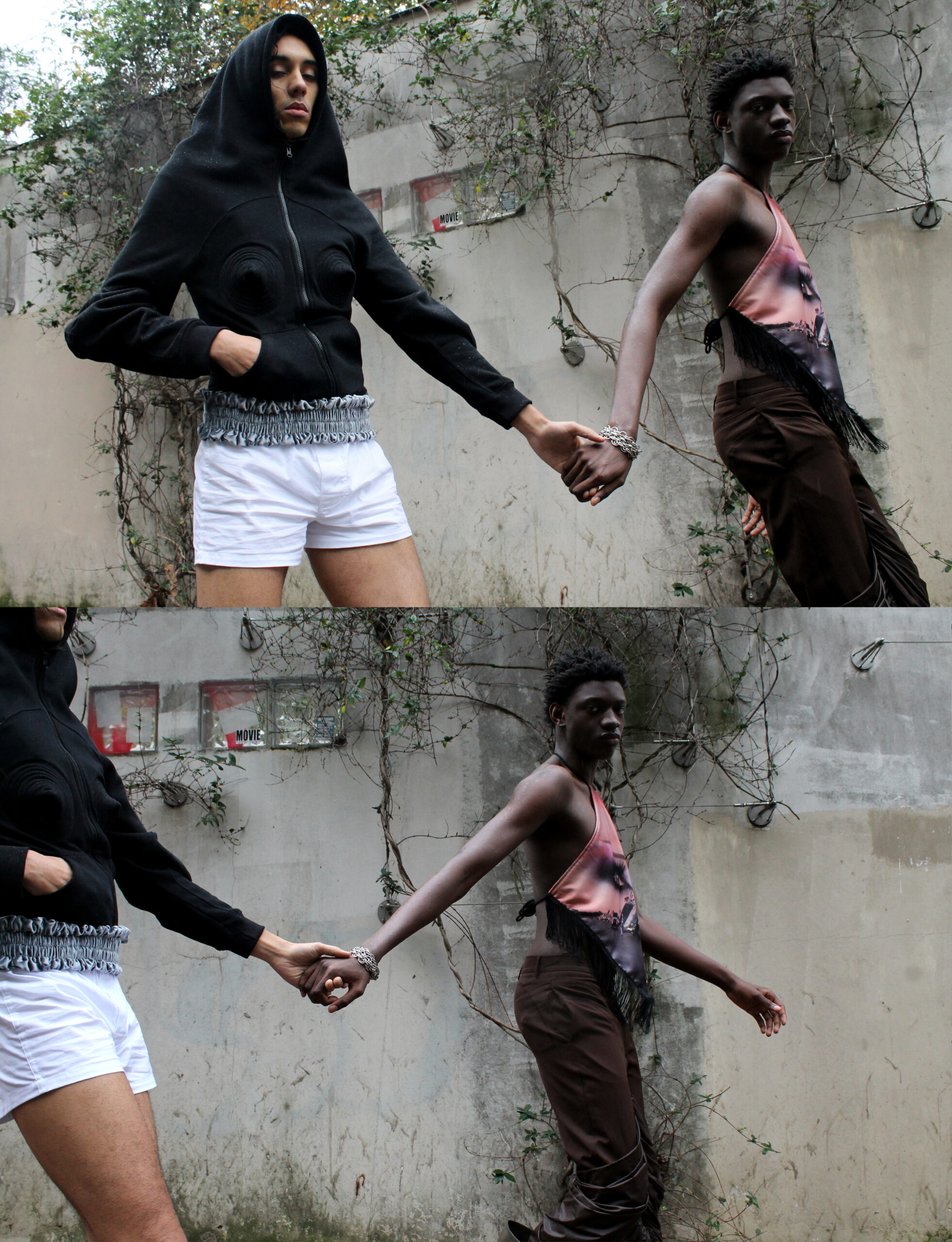
Full look TRASHY CLOTHING, shoes UNTITLAB, accessories TRANSEPARIS
This intentionality is so impactful in how every detail reflects a purpose, not just an aesthetic. Let’s take a step back — how did you and Omar first cross paths, and what led you to fashion?
We met in 2017, both studying film in Jordan, just in different colleges. We both have always felt a strong connection with fashion, but it wasn’t something we planned to do. When Omar went to the tailor’s to fix something with his mother, he would take the fabric scraps and make dresses for his dolls, ha-ha. And I was always watching FashionTV growing up. I remember seeing Vivienne Westwood or Versace shows and being so fascinated. Eventually, I got into music videos, and I went into film because of that. But then I realised that fashion is what attracted me to music videos in the first place. Both of us like the storytelling aspect of fashion, so we took our film experience and put it into the clothes.
The feeling of almost delusional grandiosity is something that definitely stuck with me, especially, in the exaggerated silhouettes. It’s almost parodical.
I can show you a quick inspo for the shoulder pads [whips out a meme of Donald Trump]. It was this photo of Trump where he was just looking at his phone, but he was basically sinking in those shoulder pads. This exaggerated silhouette has a powerful look, but deep underneath a really weak creature is hiding.
The bigger the suit, the more they’re trying to compensate for what’s missing inside… This idea of clothing as a projection of power also reminds me of the metal detailing throughout your pieces — it feels like a direct opposition to the hypocrisies of these world ‘leaders’, granting strength and protection to the wearer.
Yeah, we see protection from occupation reflected in materials like stainless steel and copper. For instance, swords have always been a symbol of freedom fighters. The double-edged sword reflects the double standard that world leaders hold toward weapons. But this resistance itself protects you, guarding the wearer. Similarly, the cups in the Sihr Protection dress are actually used for incense in the Middle East – it’s the cover where smoke comes out from. We want to bring it to the source and let the wearer decide what they want to be shielded from.
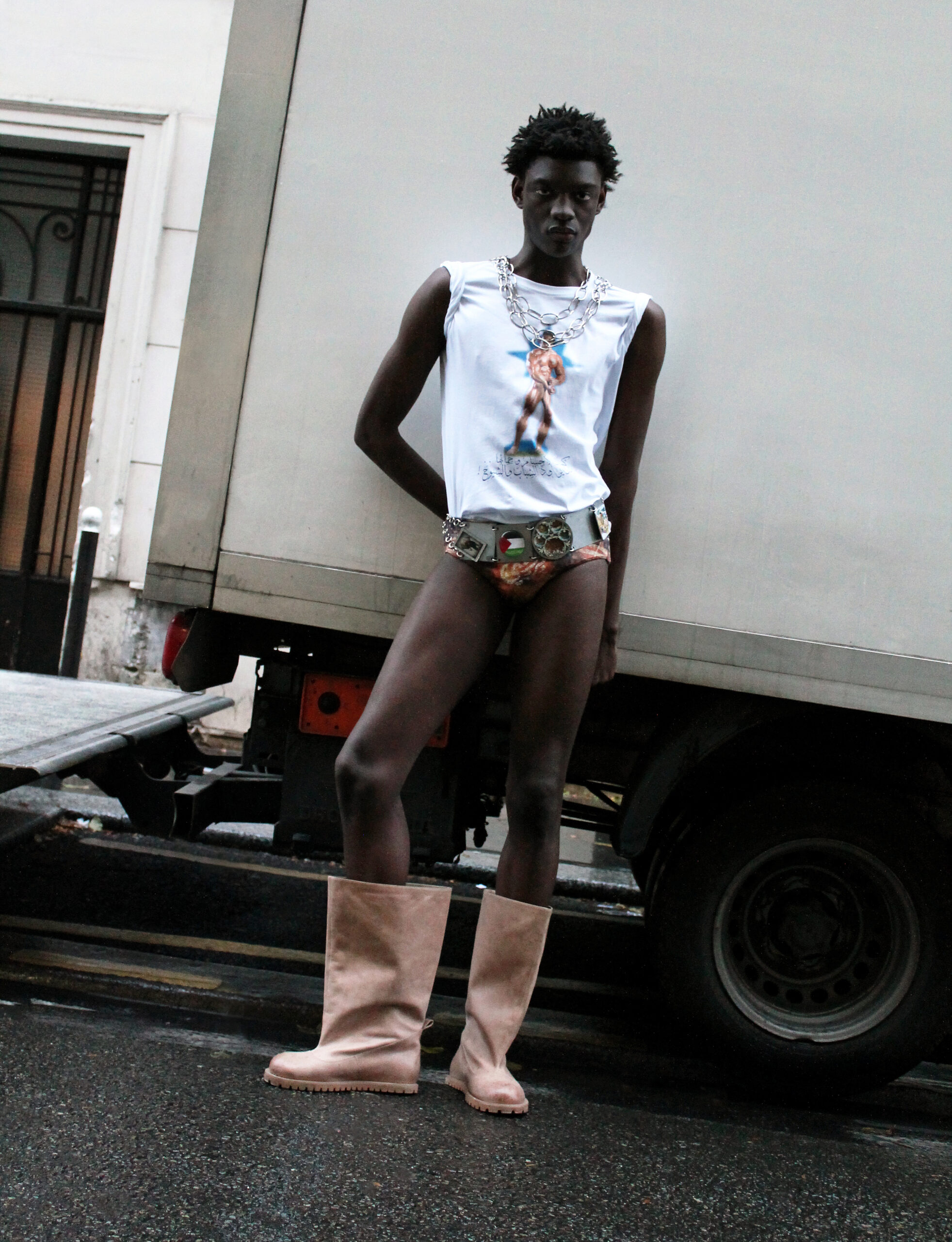
Full look TRASHY CLOTHING, shoes Highlight Studio, necklace Laruicci
I’m beyond obsessed with the bra cups motif and its many iterations of it throughout your collections.
Thanks! Yeah, for example, The Khalifa corset is inspired by the tarbouche hats worn traditionally by leaders in the Arab world, going back to the Ottoman era. Nowadays, with many Arab leaders complicit in the current genocide, the corset plays with the idea of dressing these figures up, turning them into showpieces — like showgirls — implying they’re leaders in appearance only. The use of metal in the design is inspired by the flattening, almost suffocating, feel of a chest binding. It turns the tarbouche into a hard, metal version that presses down on the chest, symbolising a sense of restriction, hopelessness, and being stifled by those in control.
It’s beautiful how one visual element can translate so many different narratives. This idea of conceptual shape-shifting also reminds me of your hood silhouette as well.
Yeah, we’ve always had the hoods. This season, they were driven by numerous instances of the police arresting Palestinian protesters, and covering their heads with their shirts to hide their identities. It was a psychological torture technique they would use so that noone could recognise who’s essentially being kidnapped. You would hear other protesters asking the person who is being kidnapped, what’s your name? Age? Where are you from? Your family? It’s often the only way to identify them. We wanted to transfer the shape of those pulled shirts onto the people in power who are enabling this – bringing it back to the reason why this silhouette even exists. But, for example, our AW21 Errorvision was inspired by contests like the Eurovision, Olympics, and Miss Universe. We recreated that hood in fur — a symbolism of dead animals being used for fashion — to portray the industry’s nonchalance around everything that is happening in the world.
Yeah, literally drowning out the sounds of daily news in fur… It’s so universal across most occupational spheres as well. Describing yourself as an ‘anti-luxury, luxury brand’, how do you navigate existing in the fashion industry?
For us, the name and the slogan of the brand plays on contradictions of being in the space of fashion. Luxury means nothing; it’s just an illusion. Our brand started with a mission to break this illusion, while being part of it — but also making fun of it and being hypocritical about it… It’s like a Trojan horse. We are bringing that message of ridiculing and disrupting that world, but we also become somewhat part of it eventually.
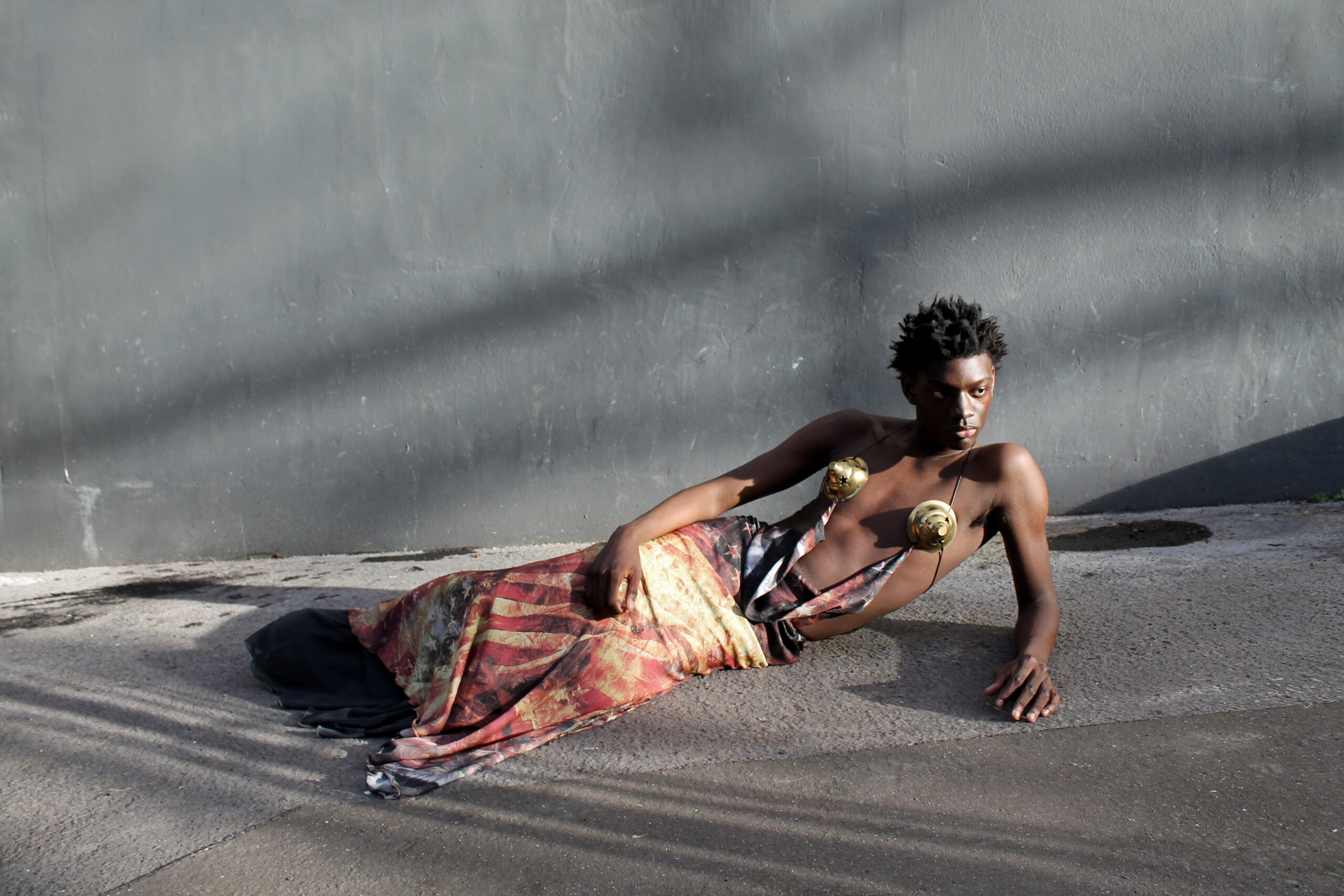
Full look TRASHY CLOTHING
There is such a strong throughline of referencing everything from historic traditions to modern-day internet pop culture (I’m looking at the Arabian Driftcore top!). How do you approach this interplay of ideas? We’re obsessed with archiving — images, films, music videos. An idea from yesterday and from a hundred years ago can work in the same context, and by combining them together we can find its own self in the present. You can’t look at what’s happening today without looking at the context of what happened before. For us, it’s part of the design process as well. We also always aim to create a whole world through our work – for example, we make a collaborative playlist for each collection, and listen to it for months to immerse ourselves in it further.
These references also often take a satirical turn — there is also just simply so much humour, even when at times it’s very dark. What is the intention behind it?
We look for a smarter way to convey a message — one that isn’t expected on the surface, but when you look deeper, the meaning clicks. That’s why we lean toward satirical, kitschy, and tongue-in-cheek styles. When people see the work, they might not immediately understand it, but once they get the context, the message resonates more strongly and sticks with them.
You are definitely forced to sit with it. It’s almost ‘corrupting’ the pop culture language to confront realities that people tend to distance themselves from when consuming fashion.
For us, this is also another reason — this is how we deal with reality. There’s so much hypocrisy, absurdity, and darkness that it almost becomes funny. Reality is so ridiculous that it feels like we have to match that ridiculousness.
Absolutely. I saw this meme earlier today which said ‘you might not do politics, but it doesn’t stop politics from doing you.’ Do you view everything as political?
It’s literally what the meme says. Our lives have been politicised – whatever we do, say, breathe, eat. Everyone’s reality is a political reality. Even paying tax is a political act. No one asks if you want to participate, but you are.
Coming back to the collection, you also collaborated with Barragán for a few pieces – love the bloodied Monica Lewinsky dollar bill skirt! How did your heritages and visions come together?
We’ve always appreciated Barragán’s approach to fashion, which also deals with very dark topics – so it was a perfect match. As a Mexican brand, they have their own political take on Americana, and we wanted to bring that perspective in. Together, we came up with four pieces that play with the idea of PsyOps – fake scenarios about people of colour and immigrant backgrounds spread by governmental propaganda.
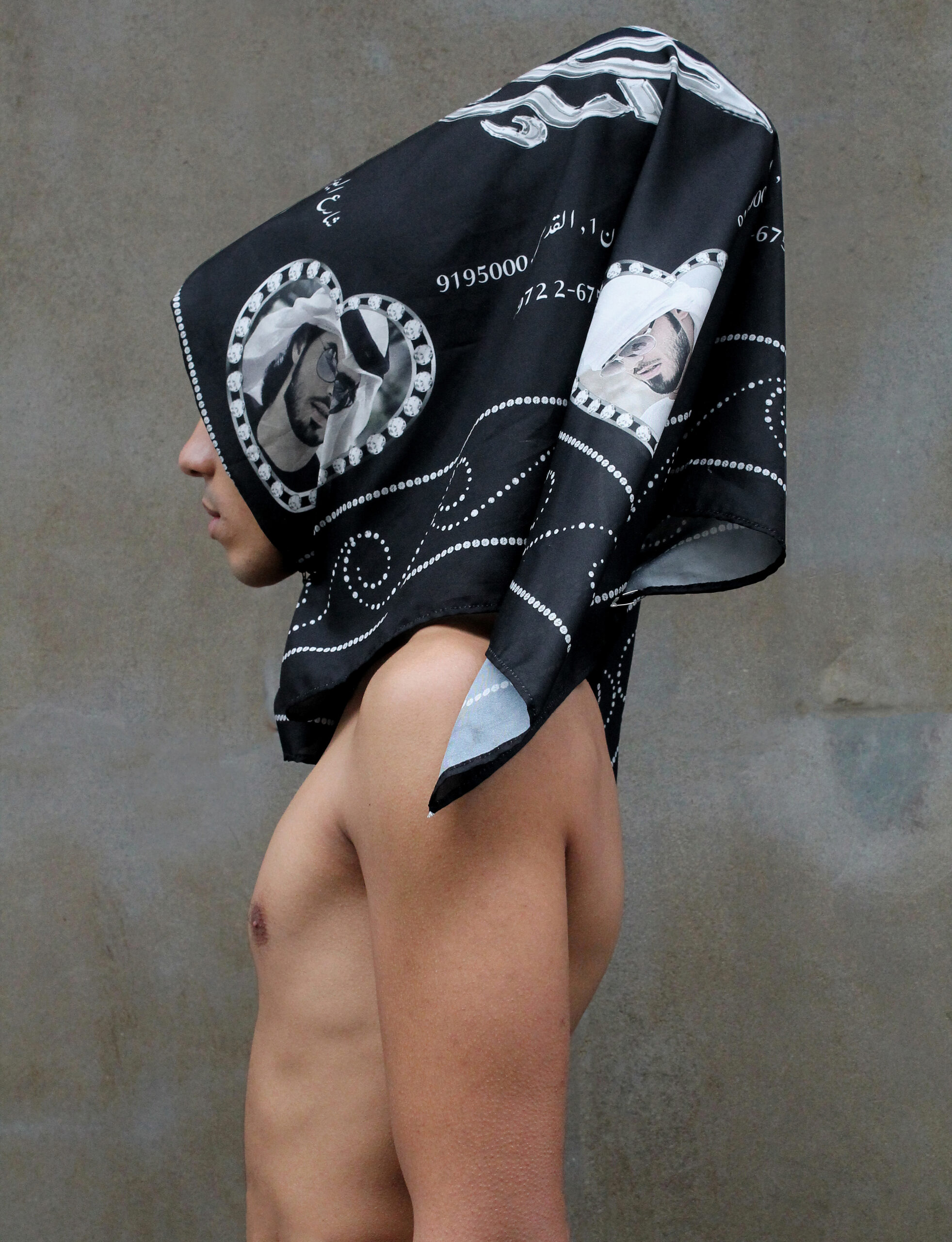
Full look TRASHY CLOTHING
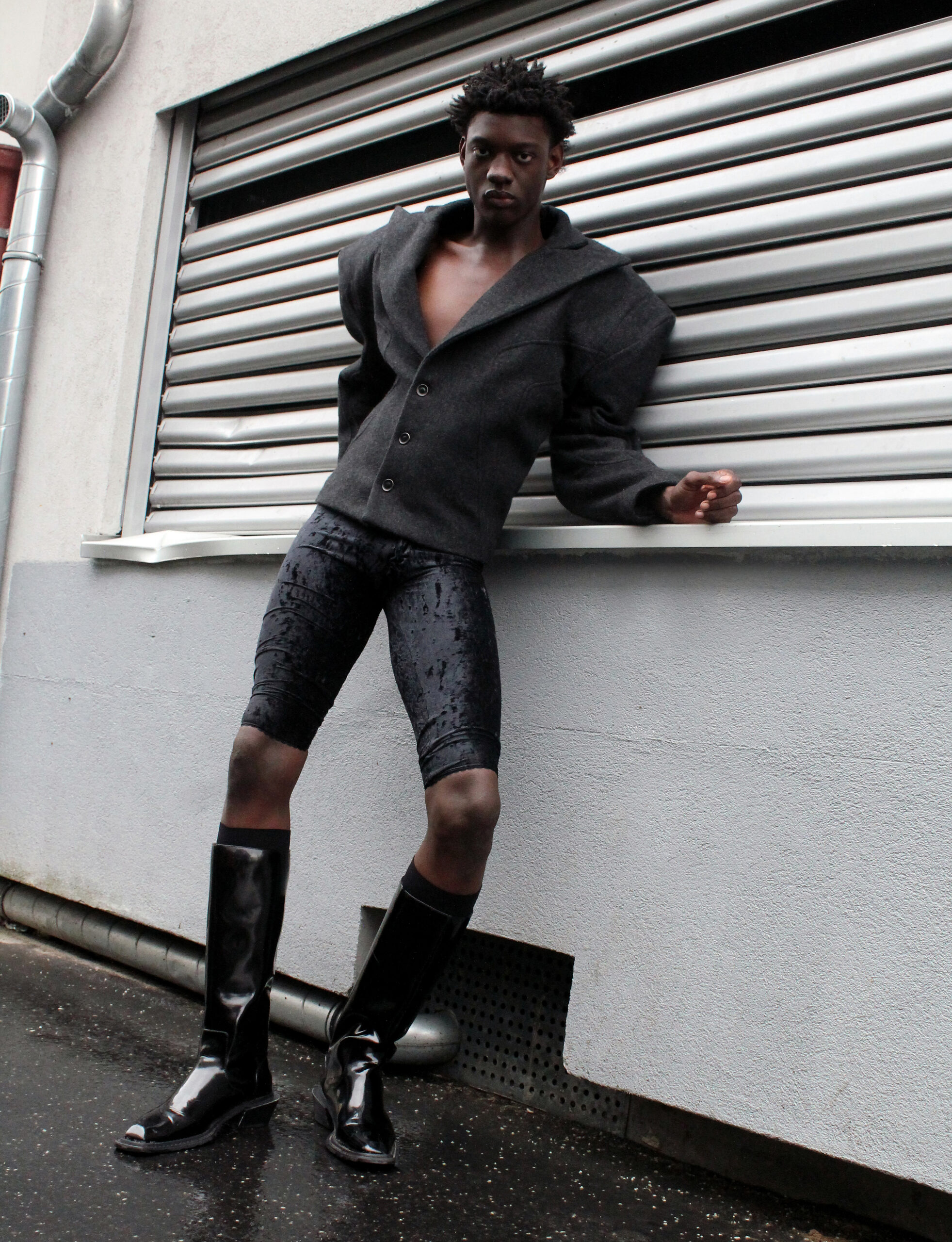
Full look TRASHY CLOTHING, shoes UNTITLAB
Visually, your campaigns generally tend to have this espionage-esque play on governmental surveillance. Could you tell me more about the story behind the Salon de Trashy campaign?
Around the 90s and early 2000s, a lot of Israeli Mossad [covert intelligence services] agents would drug women across Palestinian hair salons. Those agents would pretend to work there, drug them, take nude images and blackmail them or their husbands to become informants. We really wanted to draw attention to this story. So, we created this world as if we were actually building our own salon at a real location, and if you Google the address from our campaign, it leads to the Israeli parliament. We’ve doxxed their phone number too, so the parliament will actually answer if you call it.
This is such a bold move, I love it. Have you ever gotten into any trouble for being so outspoken around issues that are so heavily censored right now?
When it comes to humour, there is a bit more leeway. We try to find those loopholes to make sure we don’t get in trouble, ha-ha.
There’s such an art to it! I also wanted to talk about your experience as an openly Queer brand in the Middle East — especially, in the context of the constant weaponisation of Queer narratives by the Israeli government.
Here, what you do in the bedroom you keep to yourself — whether you’re straight or gay. Both Omar and I have found our circles. You can clearly see we are a Queer brand — and we use pop culture references to icons like Haifa Wehbe and Bassem Feghali that any Arab Queer person would immediately get. It’s a common language we have always shared. We’ve actually made a campaign in SS21 for the collection titled Pride for Pay. It was inspired by all those advertisements ‘visit Tel Aviv for the gay nightlife.’ But it was looked at from the point of a Queer Palestinian. At first, the campaign looks regular, but when you pay attention, you see someone getting zip-tied and kidnapped. It was a dystopian portrayal of an Israeli gay heaven — which is a gay hell if you’re Palestinian. No matter how much you brand it as heaven, it doesn’t make it true.
Exactly! Where do you find the strength to keep going through everything that is happening right now?
Our work has always come from a point of frustration. We’re not always motivated, but we always have something to say. If someone can take anything from it, it’s all worth it.
I hope you manage to somehow take care of yourselves amidst it, too. Has creative expression been in any way healing, especially if it’s something you can share with your community?
It’s not healing yet. For us, it’s still a very hopeless reality. Our community is feeling the same, but everyone has their own way of storytelling. I guess we are all protective of our culture and crafts, which in a way is already special.
There is so much power in preserving and reinterpreting the rich heritage you come from. What are you envisioning for Trashy Clothing in the future?
Every year, we want to make it a more sophisticated world than it was before. Evolving the characters and ideas into this world of their own. But it’s also taking it step by step — last year, I couldn’t imagine that we’d be doing this now. Hopefully, in the next 10 years we are building this world of ours with less frustration and more hope.
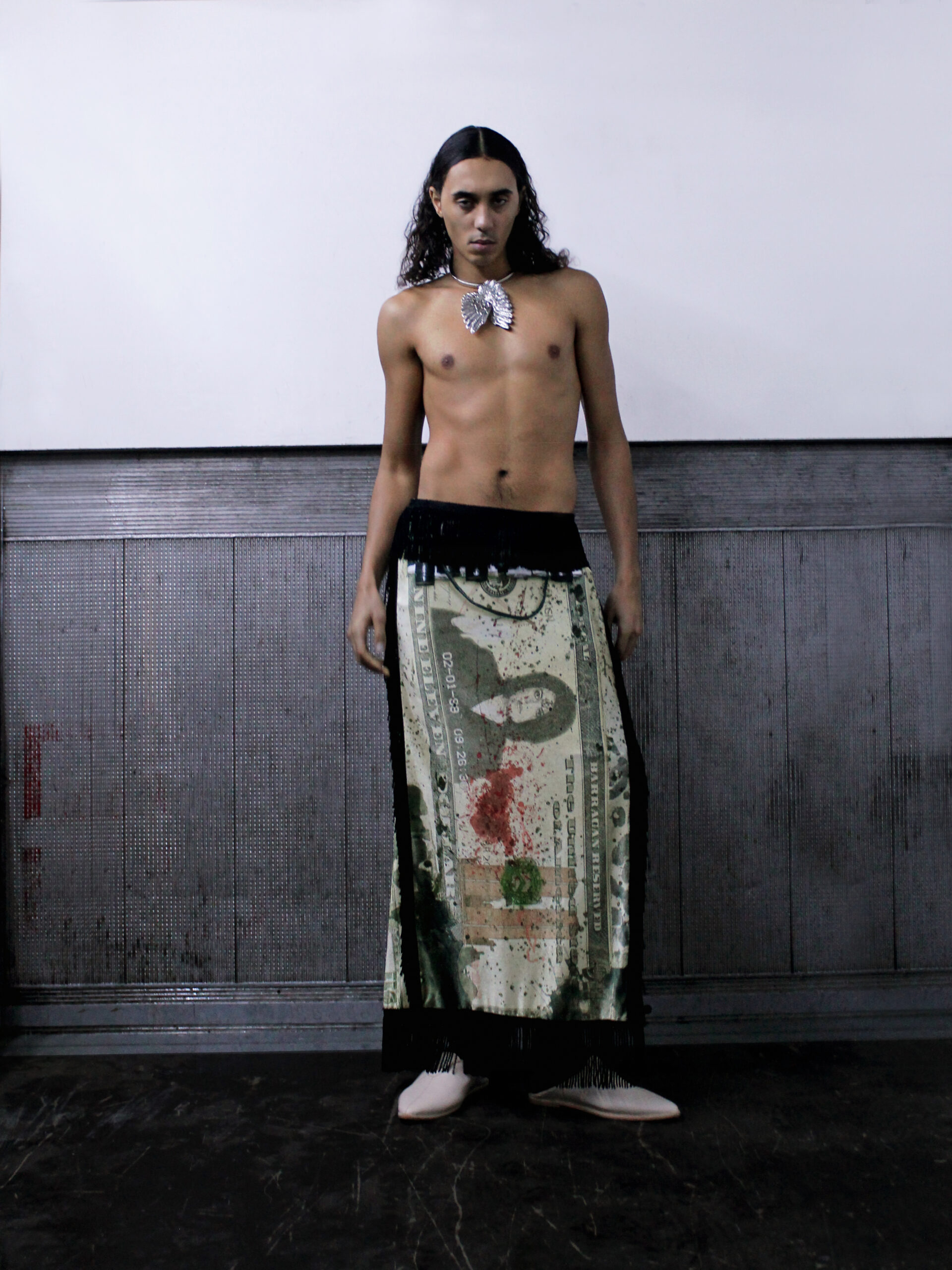
Full look TRASHY CLOTHING
Words by Evita Shrestha
Photography by Tom Goddard
Styling by Mehdi Bakhti
Hair and make-up by Fatma Bendris
Modelled by Ayanleh @ Majin Mgmt and Mahamdou @ Gaze
Styling assistance by India
Special thank you to Autrement PR
Notifications